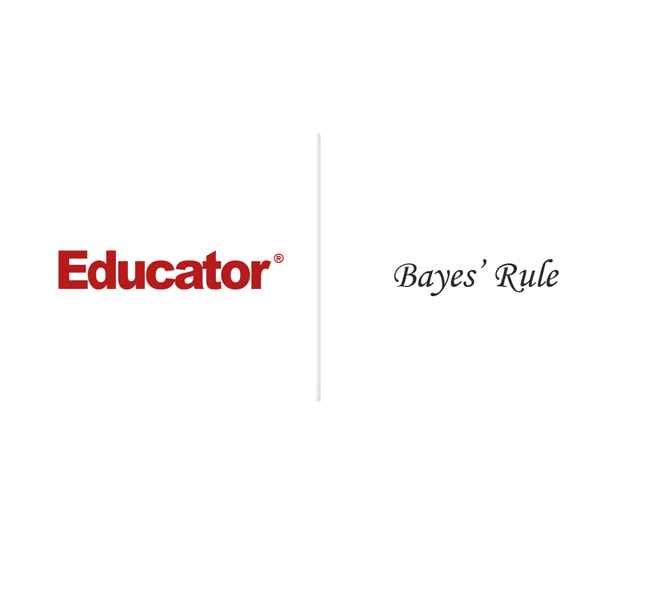Click video to play

This is a quick preview of the lesson. For full access, please Log In or Sign up.
For more information, please see full course syllabus of Probability
For more information, please see full course syllabus of Probability
Probability Bayes' Rule
Lecture Description
In this lesson, we are going to talk about Bayes’ rule. Bayes’ rule is one of the most interesting rules in probability but it is also the easiest to make mistakes with. You get these very counterintuitive results with Bayes' rule and you can get some very tricky problems that can really mess with your head. It is worth being very careful when you are dealing with this rule. It is also worth following the formula very carefully. If you follow the formula, you would not go wrong but you can also get some very strange stuff, if you are not careful.
Bookmark & Share
Embed
Share this knowledge with your friends!
Copy & Paste this embed code into your website’s HTML
Please ensure that your website editor is in text mode when you paste the code.(In Wordpress, the mode button is on the top right corner.)
×
Since this lesson is not free, only the preview will appear on your website.
- - Allow users to view the embedded video in full-size.
Next Lecture
Previous Lecture










































 Answer Engine
Answer Engine
1 answer
Thu Dec 22, 2016 11:31 AM
Post by Bharathi Viswanathan on December 20, 2016
Example 5.P(A/B1). You have mentioned BB-Boy Boy as one option. But based on problem is it an invalid option as there is only 1 boy?
3 answers
Thu Aug 13, 2015 8:40 PM
Post by bo zhang on July 26, 2015
Hi,Dr.William,Thanks for the great video and it helps a lot,my teacher taught me that there are other ways to solve such conditional probability, for instance, using the tree diagram,and i have already solved example 1 with way of tree diagram, but it seems does not work when i apply it in example 2,because in tree diagram, for each step upper and lower must sum to one,and according to your problem, i cannot directly using the tree diagram to calculate the probability,and the subject is not opposite(like positive and negative when we describe a tree diagram),can you help me solve it with the way of tree diagram?
1 answer
Wed Oct 8, 2014 4:53 PM
Post by Mckenzie Parent on October 7, 2014
Hi, my professor solved Bayes rule problems slightly different by using the formula P(A|B)=P(A n B)/P(B) and he takes in the concepts that P(B) is mutually exclusive. Where he does the intersection of A and B the union with A intersect A with the other variable. I wonder if it is the same methods and you derive to the same answer.
1 answer
Mon Jun 23, 2014 7:17 PM
Post by Thuy Nguyen on June 21, 2014
I'm sorry, but for the Pogo Lane example, wouldn't you multiply by 10/10 in order to turn those decimals into 2, 4, etc.? In the video, you multiplied by 100/100, which would turn those decimals into 20, 40, etc.
1 answer
Thu May 1, 2014 1:24 PM
Post by Michael Onizak on April 28, 2014
sorry guys *our hands not are hands
1 answer
Thu May 1, 2014 1:23 PM
Post by Michael Onizak on April 28, 2014
Thanks Dr. Murray, example 4 is a great problem! After explaining this problem to a friend I have decided to post for those who are still contemplating over why it is 2/3 and not 1/2. Think of it this way. We know that the orange/orange bag is not a viable option and that we have one apple in are hand. This means out of ALL the fruit remaining to pick from (3 pieces) we have 2 apples to possibly pick and 1 orange, which we need to consider picking. This is why it is 2/3 and not 1/2.